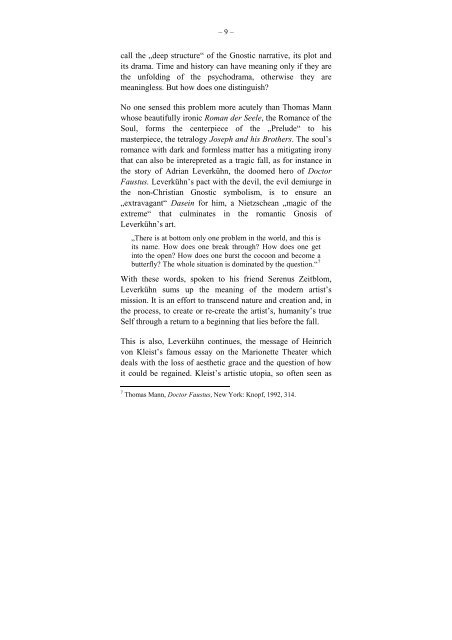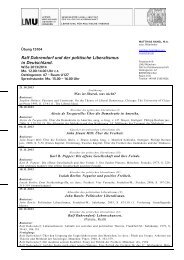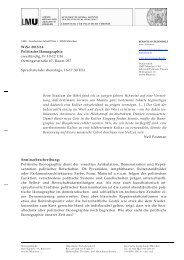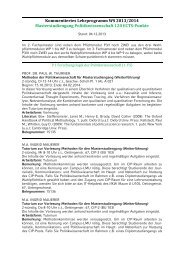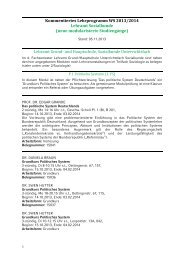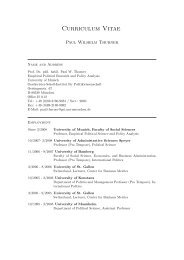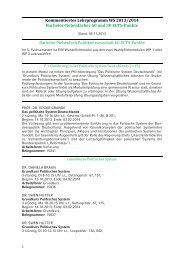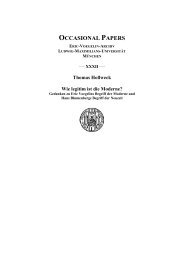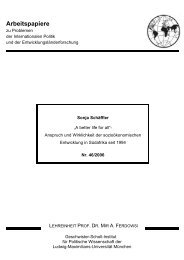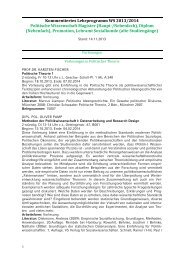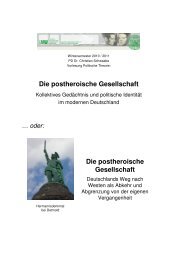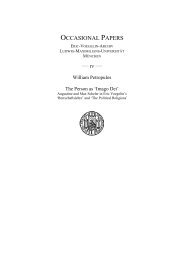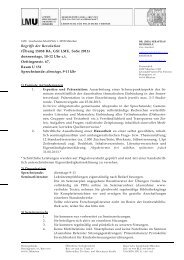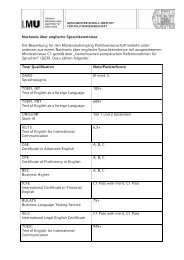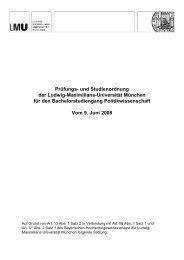THOMAS HOLLWECK is Associate Professor of German at
THOMAS HOLLWECK is Associate Professor of German at
THOMAS HOLLWECK is Associate Professor of German at
You also want an ePaper? Increase the reach of your titles
YUMPU automatically turns print PDFs into web optimized ePapers that Google loves.
– 9 –<br />
call the „deep structure“ <strong>of</strong> the Gnostic narr<strong>at</strong>ive, its plot and<br />
its drama. Time and h<strong>is</strong>tory can have meaning only if they are<br />
the unfolding <strong>of</strong> the psychodrama, otherw<strong>is</strong>e they are<br />
meaningless. But how does one d<strong>is</strong>tingu<strong>is</strong>h?<br />
No one sensed th<strong>is</strong> problem more acutely than Thomas Mann<br />
whose beautifully ironic Roman der Seele, the Romance <strong>of</strong> the<br />
Soul, forms the centerpiece <strong>of</strong> the „Prelude“ to h<strong>is</strong><br />
masterpiece, the tetralogy Joseph and h<strong>is</strong> Brothers. The soul’s<br />
romance with dark and formless m<strong>at</strong>ter has a mitig<strong>at</strong>ing irony<br />
th<strong>at</strong> can also be interepreted as a tragic fall, as for instance in<br />
the story <strong>of</strong> Adrian Leverkühn, the doomed hero <strong>of</strong> Doctor<br />
Faustus. Leverkühn’s pact with the devil, the evil demiurge in<br />
the non-Chr<strong>is</strong>tian Gnostic symbol<strong>is</strong>m, <strong>is</strong> to ensure an<br />
„extravagant“ Dasein for him, a Nietzschean „magic <strong>of</strong> the<br />
extreme“ th<strong>at</strong> culmin<strong>at</strong>es in the romantic Gnos<strong>is</strong> <strong>of</strong><br />
Leverkühn’s art.<br />
„There <strong>is</strong> <strong>at</strong> bottom only one problem in the world, and th<strong>is</strong> <strong>is</strong><br />
its name. How does one break through? How does one get<br />
into the open? How does one burst the cocoon and become a<br />
butterfly? The whole situ<strong>at</strong>ion <strong>is</strong> domin<strong>at</strong>ed by the question.“ 7<br />
With these words, spoken to h<strong>is</strong> friend Serenus Zeitblom,<br />
Leverkühn sums up the meaning <strong>of</strong> the modern art<strong>is</strong>t’s<br />
m<strong>is</strong>sion. It <strong>is</strong> an effort to transcend n<strong>at</strong>ure and cre<strong>at</strong>ion and, in<br />
the process, to cre<strong>at</strong>e or re-cre<strong>at</strong>e the art<strong>is</strong>t’s, humanity’s true<br />
Self through a return to a beginning th<strong>at</strong> lies before the fall.<br />
Th<strong>is</strong> <strong>is</strong> also, Leverkühn continues, the message <strong>of</strong> Heinrich<br />
von Kle<strong>is</strong>t’s famous essay on the Marionette The<strong>at</strong>er which<br />
deals with the loss <strong>of</strong> aesthetic grace and the question <strong>of</strong> how<br />
it could be regained. Kle<strong>is</strong>t’s art<strong>is</strong>tic utopia, so <strong>of</strong>ten seen as<br />
7 Thomas Mann, Doctor Faustus, New York: Knopf, 1992, 314.


